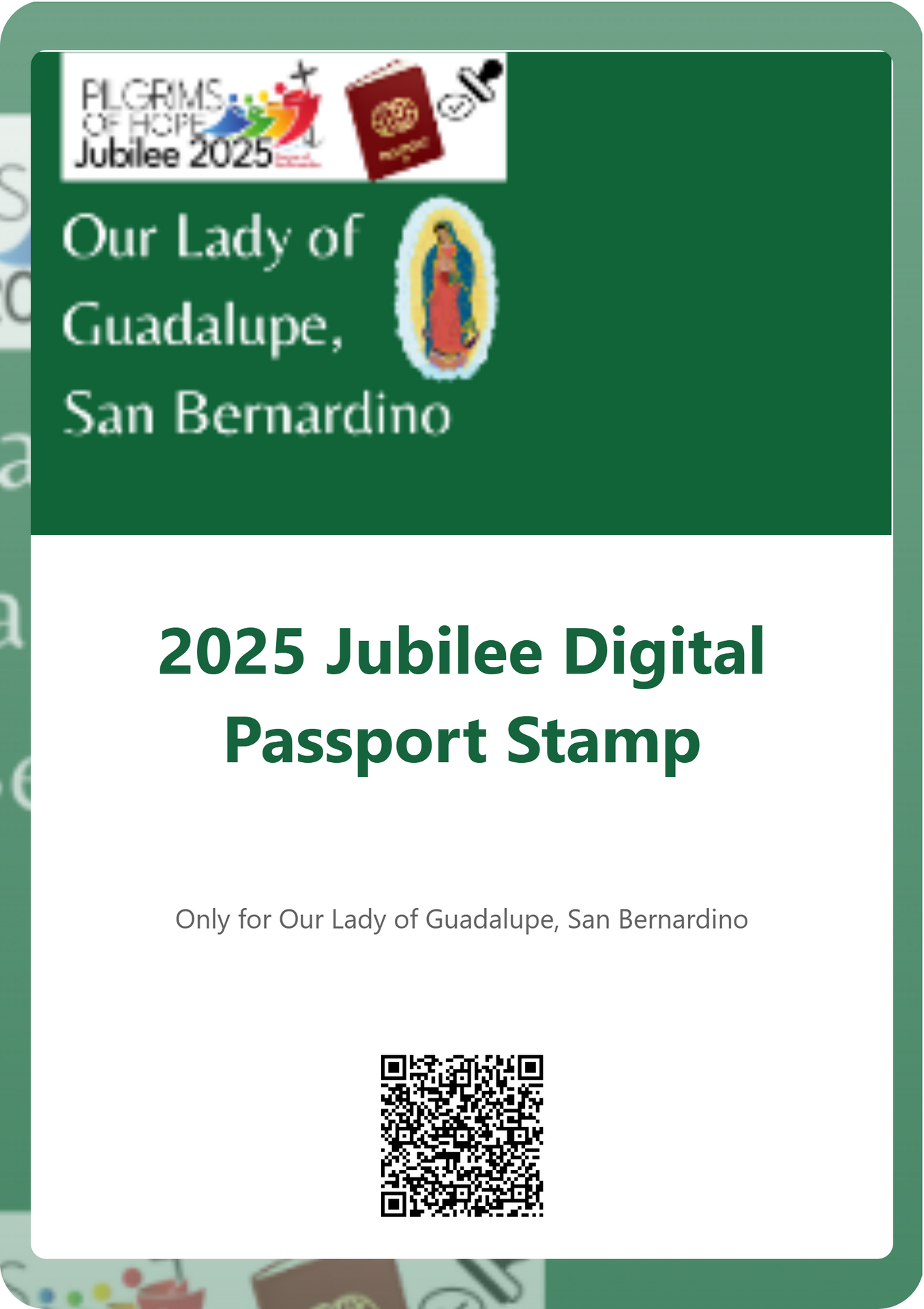
Digital Passport Stamp
Each jubilee site will feature a unique QR code for visitors to scan and input their details. These details will then be automatically entered into an Excel spreadsheet, compiling a list of all individuals who have visited each site. This system will help maintain a complete record of visitors for each jubilee location.
Like a flame my hope is burning,
may my song arise to you:
Source of life that has no ending,
on life’s path I trust in you.
Ev’ry nation, tongue, and people
find a light within your Word.
Scattered fragile sons and daughters
find a home in your dear Son. Rit.
God, so tender and so patient,
dawn of hope, you care for all.
Heav’n and earth are recreated
by the Spirit of Life set free. Rit.
Raise your eyes, the wind is blowing,
for our God is born in time.
Son made man for you and many
who will find the way in him. Rit.
Jubilee year is a sign of reconciliation because it establishes a “favorable time” (cf. 2 Corinthians 6:2) for conversion. We are called to put God at the center of our lives, growing toward Him and acknowledging His primacy. Concretely, reconciliation is about experiencing the sacrament of Reconciliation, taking advantage of this time to rediscover the value of confession, and personally receiving God's word of forgiveness. There are some Jubilee churches that continuously offer the possibility for Reconciliation. Indulgence is a concrete manifestation of God's mercy, which surpasses and transforms the boundaries of human justice. This gift of grace came about by Jesus’ saving mission. Seeing the witnesses of Jesus and the saints and living in communion with themì our hope for our own forgiveness is strengthened. Concretely, the experience of God’s mercy involves some spiritual actions, as Pope Francis has recommended to the faithful. Those who cannot make the Jubilee pilgrimage due to illness or other circumstances are nevertheless invited to take part in the spiritual journey that accompanies this Jubilee year. Among the conditions for receiving the indulgence is praying for the Pope's intentions.

The cross of Christ is
the hope that cannot
ever be abandoned
because we
are always in need of
it, especially in the
most difficult
moments.
The Cross, in the
shape of a sail, is
transformed into
an anchor that
imposes itself
over the waves in
motion. A
universal symbol
of Hope.
The figures represent
humanity from the
four corners of the
World. They are
embracing each other
to illustrate the
solidarity between the
peoples, as the first
holds onto the cross.
The rough sea
is a reminder of the
difficulties of the
pilgrimage of life. Often,
personal events as well as
those of the world, press
on us more intensely,
demanding a greater
hope.
The logo shows how the way
of the pilgrimage is not an
individual effort, but rather
collective, with the impression of
a growing dynamism that tends
more and more to the cross.
Father in heaven,
may the faith you have gifted us in
your son Jesus Christ, our brother,
and the flame of charity
kindled in our hearts by the Holy Spirit,
reawaken in us, the blessed hope
for the coming of your Kingdom.
May your grace transform us
into diligent cultivators of the evangelical seeds
that make humanity and the cosmos rise
unto the confident expectation
of the new heavens and the new earth,
when with the powers of Evil overcome,
your glory shall be manifested eternally.
May the grace of the Jubilee
reawaken in us, Pilgrims of Hope,
the yearning for heavenly treasures
and pour over all the earth
the joy and peace
of our Redeemer.
To you God blessed in eternity,
be praise and glory for ever and ever.
Amen.
The Jubilee has always been an event of the people. In fact, the first Holy Year
of 1300 was born at the the request of the People of God. In a climate of change of century, the faithful o f Rome asked Pope Boniface VIll for "a pardon of sins which would be not only more abundant, but complete" as we read in the Bull of Indiction.
Among the ancient Hebrews, the Jubilee (called the year of the yobel, "of the goat" because the holiday was announced by the sound of a goat's horn) was a year proclaimed holy. At that time, the Mosaic law prescribed that the land, o f which God was the sole master, would return to its former owner and that slaves would receive back their freedom. It usually would fall every 50 years.
In the Christian era, after the first Jubilee, the recurrence for the jubilee celebration was set by Boniface VIII t o b e every 100 years. In 1342, following a petition from the Romans to Pope Clement VI, the period was reduced t o 5 0 years. Subsequently, Pope Paul Il, in the mid-15th century, reduced the inter-jubilee period to 25 years.